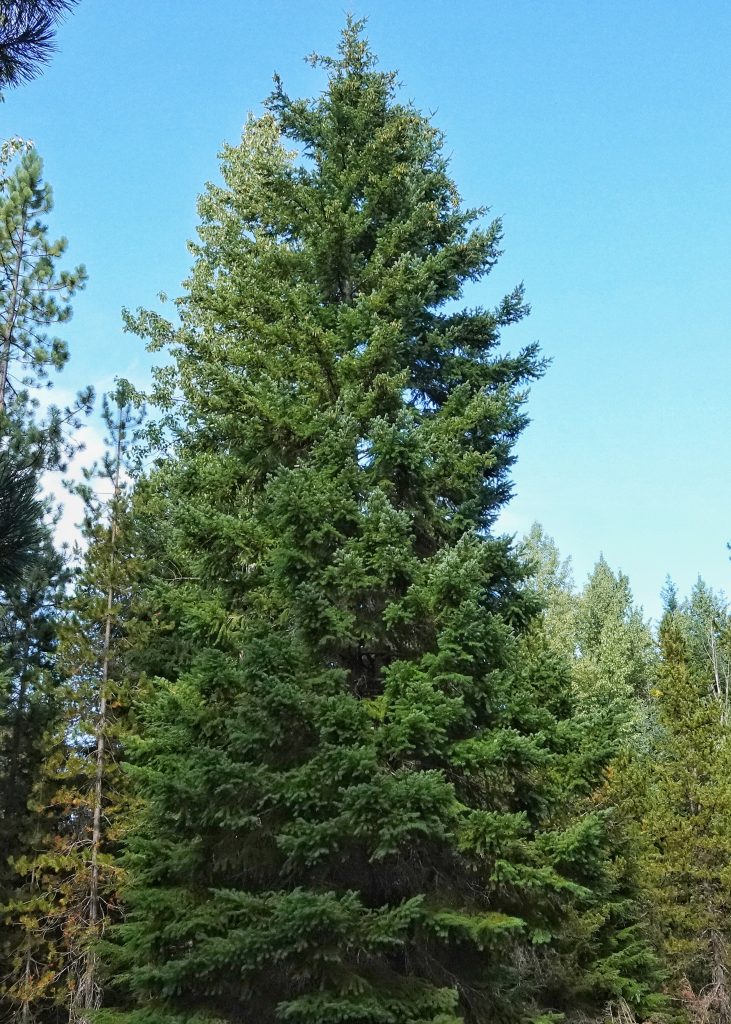
In the last few weeks, as I’ve walked roads, trails, and wandered forests, comparing hundreds of Douglas-firs and Western Hemlocks (Tsuga heterophylla), I’m frequently disappointed in myself that it took me so long to be able to confidently differentiate these two species. Then I get into an area with heavy ground cover and a relatively equal mixture of mature specimens of the two (so that it is difficult to even find cones, and if I do I can’t be sure what tree they came from), and I remember why I got so frustrated that I gave up. But now, though there is almost always some level of uncertainty in the identification of huge trees whose lowest foliage is 50’ over my head, I feel like I’ve got a grip on this.
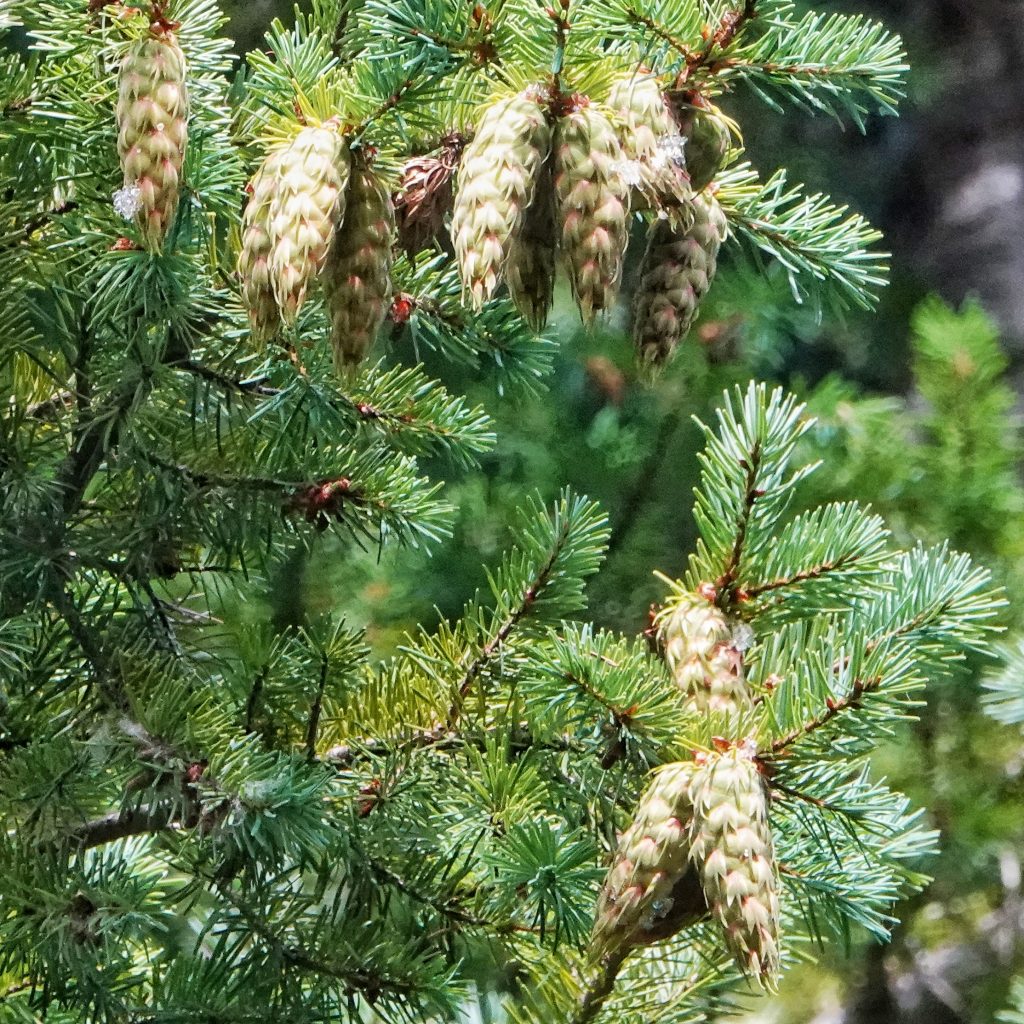
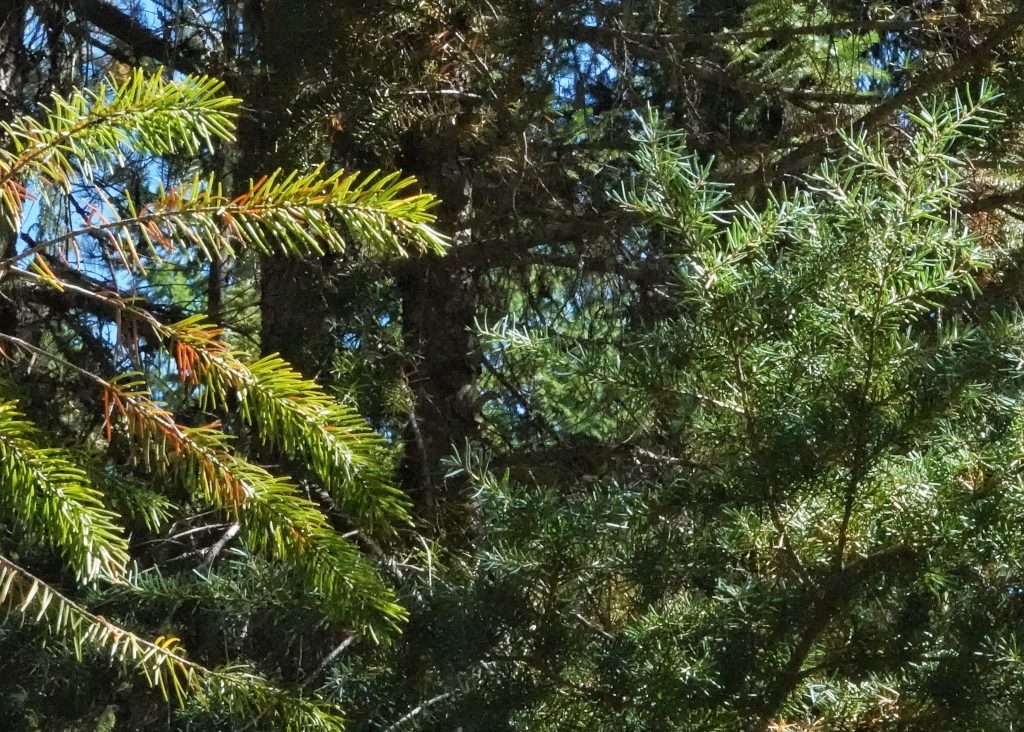
The easiest specimens to differentiate are those that are less than 30’ tall, because their foliage is easily accessible, and the needle form and pattern for each is distinctive. Douglas-fir have narrow (under 1.5mm wide) straight sided needles that are all the same size, are 18-30mm long, come to a point, and are arrayed all of the way around the stem, whereas Western Hemlock have slightly oblong (over 1.5mm in width) needles that are two different sizes, the longest of which are seldom over 18mm, have a rounded tip, and are all on the top of the stem. The cones are also quite easy to differentiate, because those of Doug-fir are 2.5-4” long and have bracts with an obvious pitchfork or trident shape that extends past the scales, while those of Western Hemlock are less than 1.5” long, and lack bracts covering the egg-shaped scales.
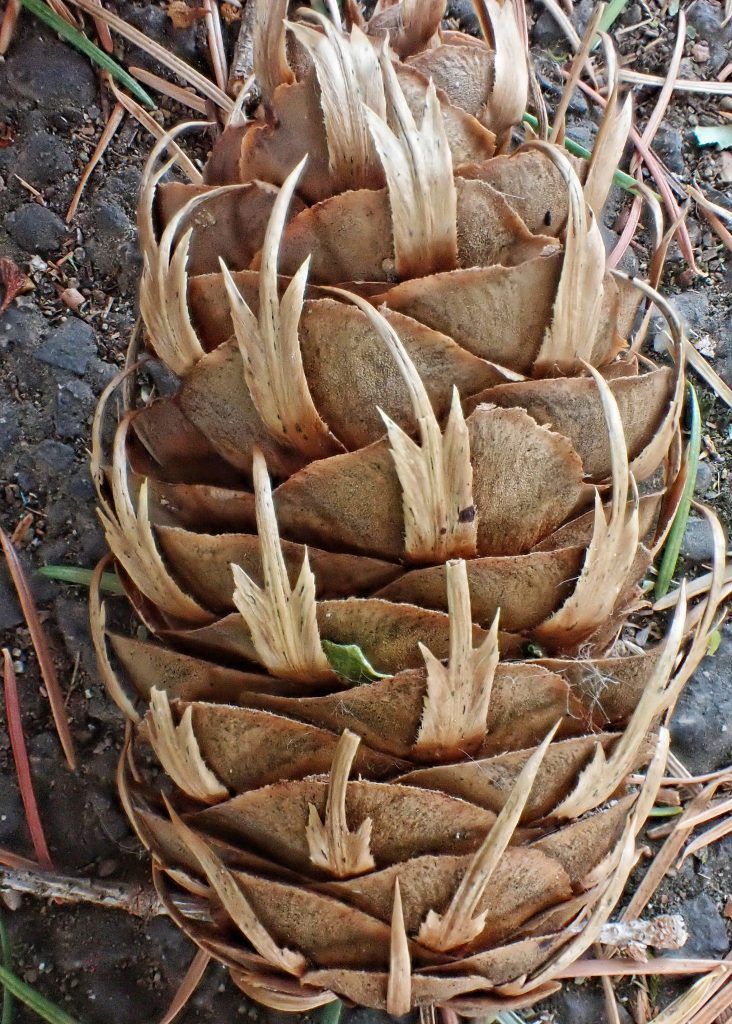
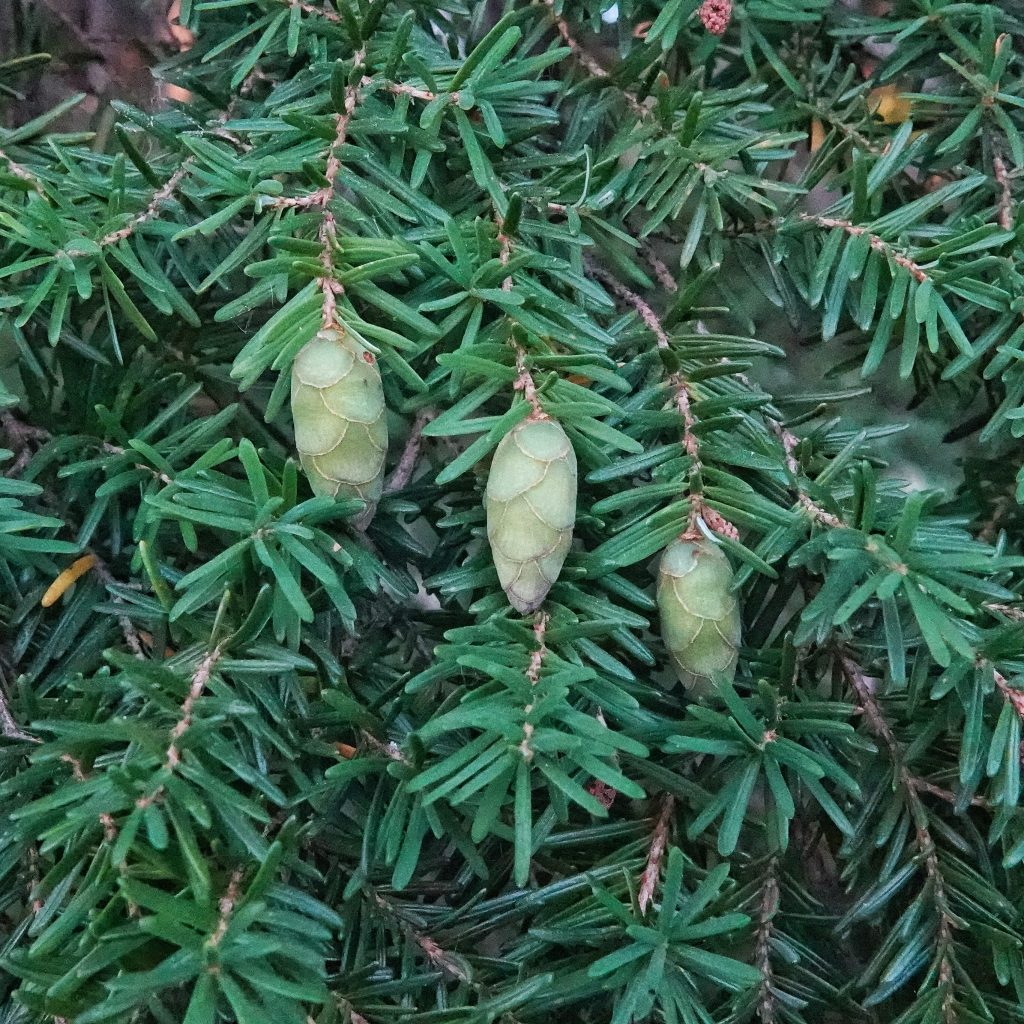
As I mentioned above, mature mixed trees are where it gets really tricky, but there are differences in the bark, and in the form. Because Douglas-fir have relatively long needles and long side branches, a silhouette of upper limbs looks somewhat clubbed, while Western Hemlock, with its shorter needles and shorter side branches, presents a rather lacy appearance when viewed from below. Doug-fir also frequently have lower limbs on large trees that droop straight down with a clean, ropy look, while the occasional drooping branches of Western Hemlock are very messy looking.
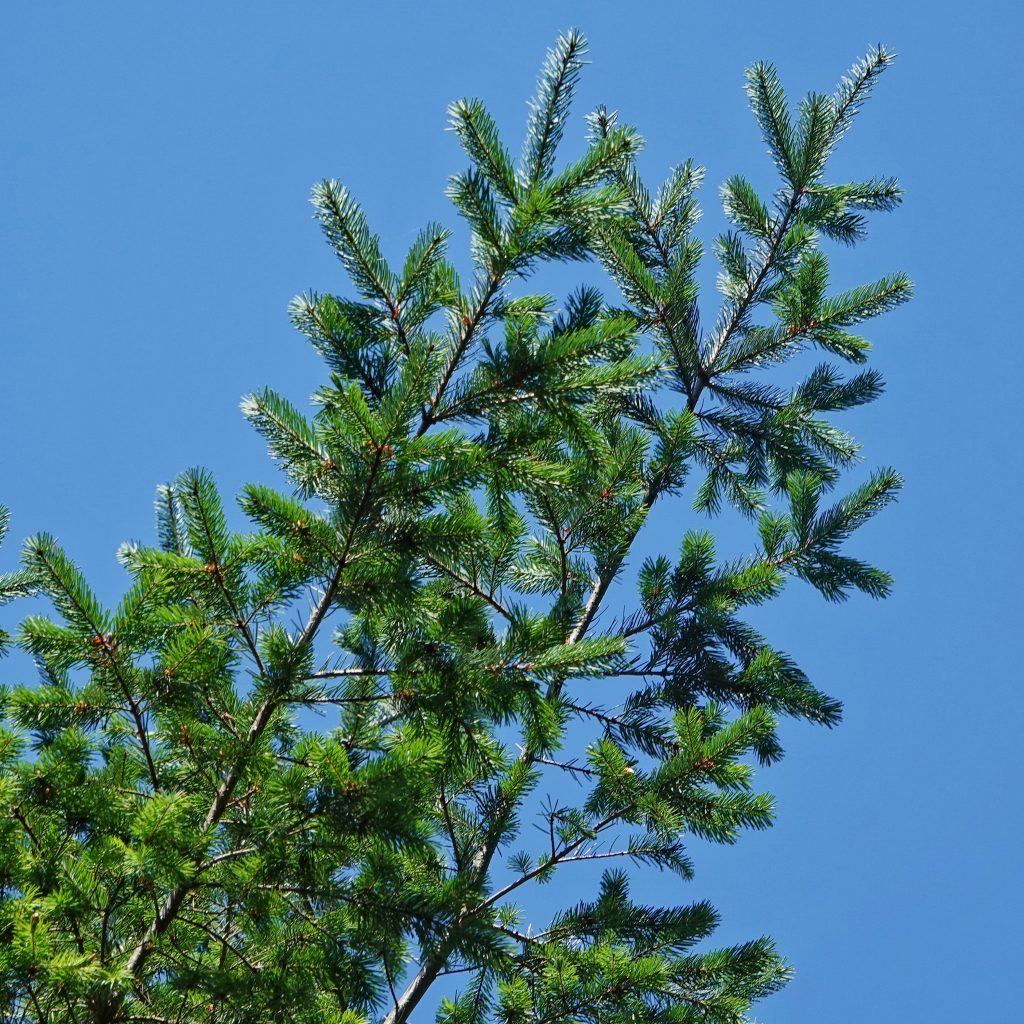
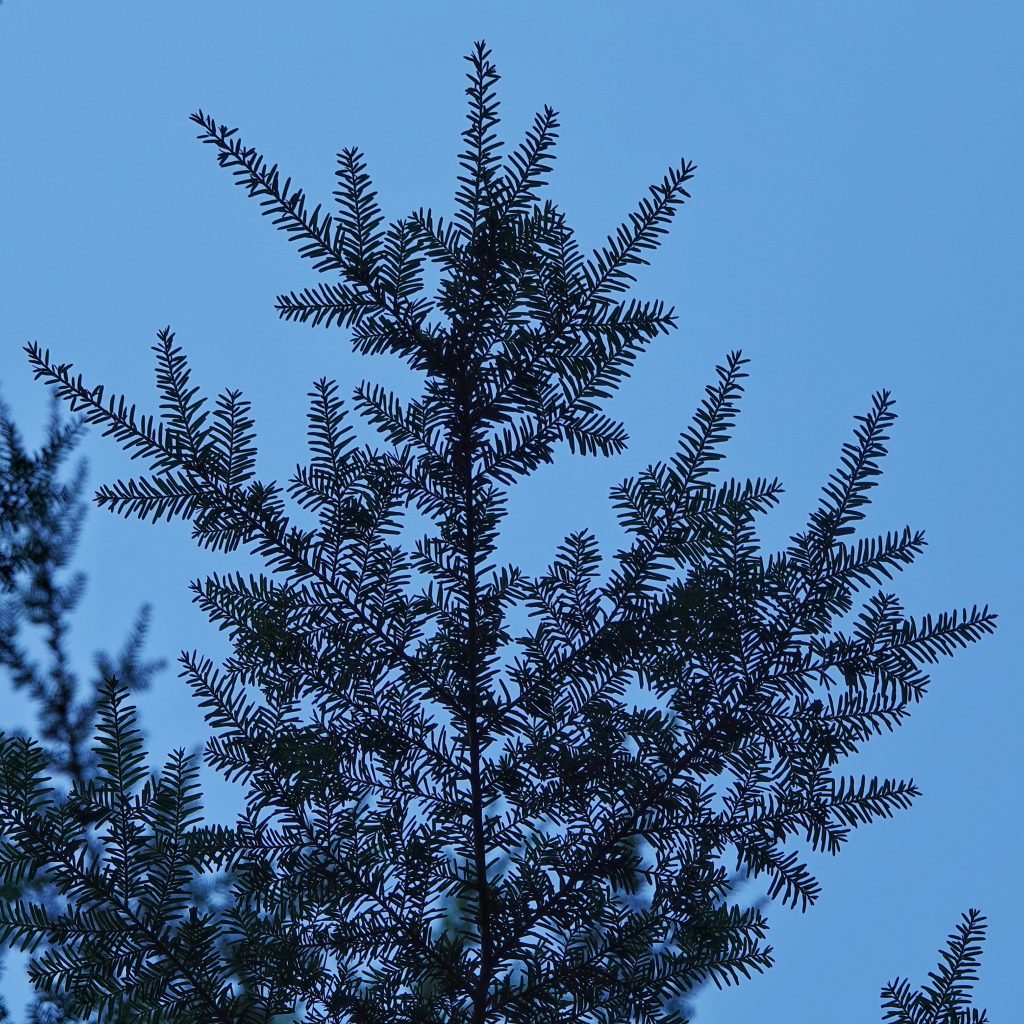
For those of you with good color vision, you may note that the bark of Doug-fir is greyish to reddish brown, while Western Hemlock is reddish to purplish brown. But for us colorblind folks it is easier to look for the fact that, because its bark is 3-10” thick, the bark of Doug-fir breaks into broad plates with deep fissures, whereas the much thinner bark (1-1.5” thick) of Western Hemlock has narrower plates with shallow fissures. Distinguishing the two by bark alone takes considerable practice, and I’m far from expert at it, but during a recent trip to a fairly open forest containing both species I had about a 90% success rate, as confirmed by the cones at their base.
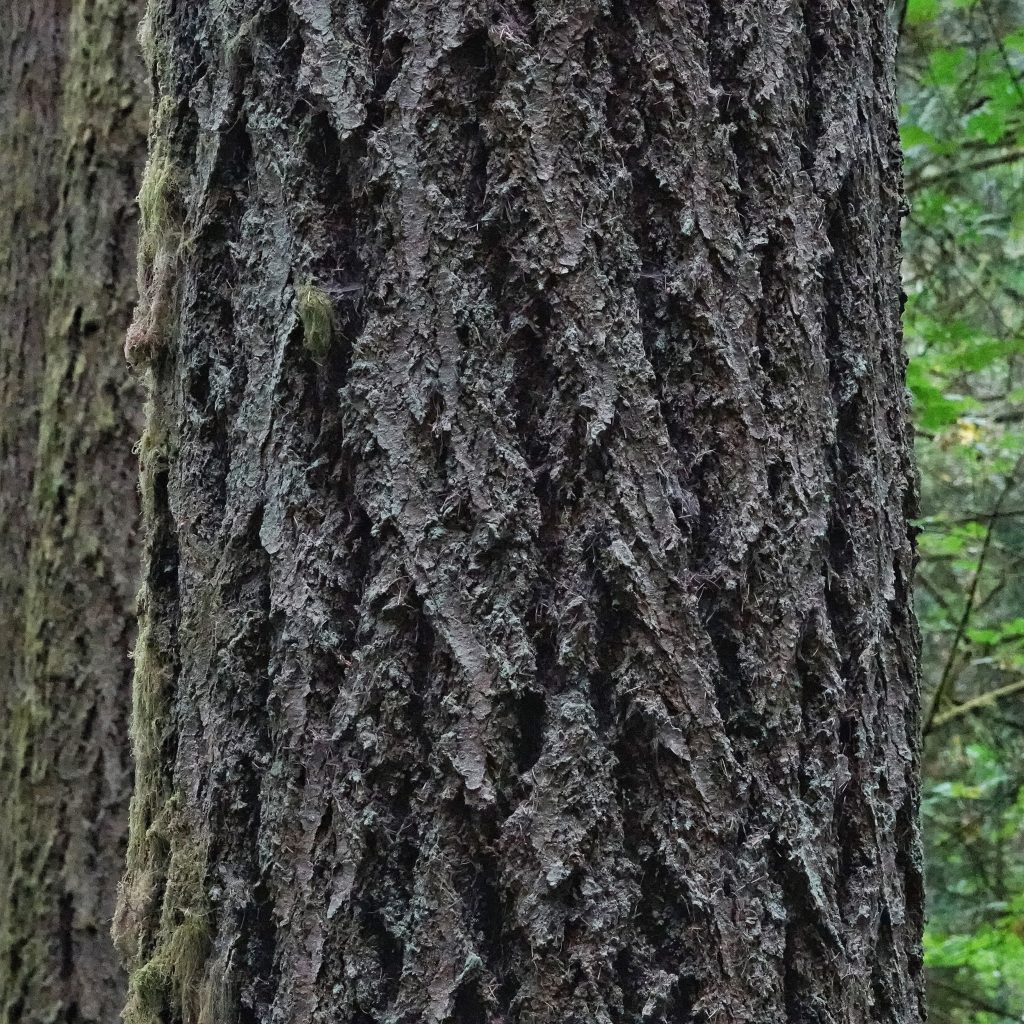
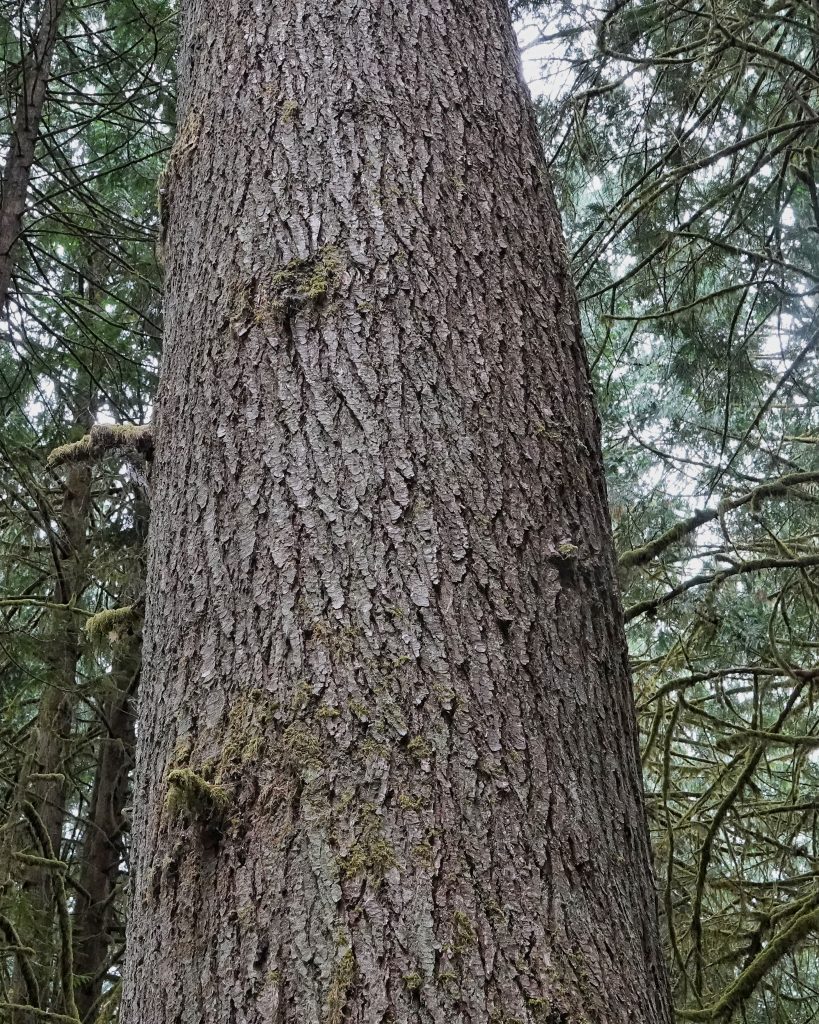
This species has 2 varieties- P. m. var. menziesii (Coastal Douglas-fir) which grows from the Cascades to the Pacific, and has appressed cone bracts and yellow green leaves with stomatal bloom only on the underside, and P. m. var. glauca (Rocky Mountain Douglas-fir) with spreading bracts and blue green needles that may have stomata on both sides of the leaves, which is found in the Rockies and it’s associated ranges. Douglas-fir are not true firs, which have upright cones that disintegrate scale by scale while still on the tree, rather than pendant cones that fall from the tree when mature. Doug-firs also have more flexible needles and branches than true firs, making them rather soft to the touch, as opposed to the rather stiff and unyielding true firs. Douglas-fir has had a bewildering array of both common (including Douglas, yellow or red spruce, Oregon pine, and Douglastree) and scientific names. For a discussion of its nomenclatural history, see this article by James Reveal.
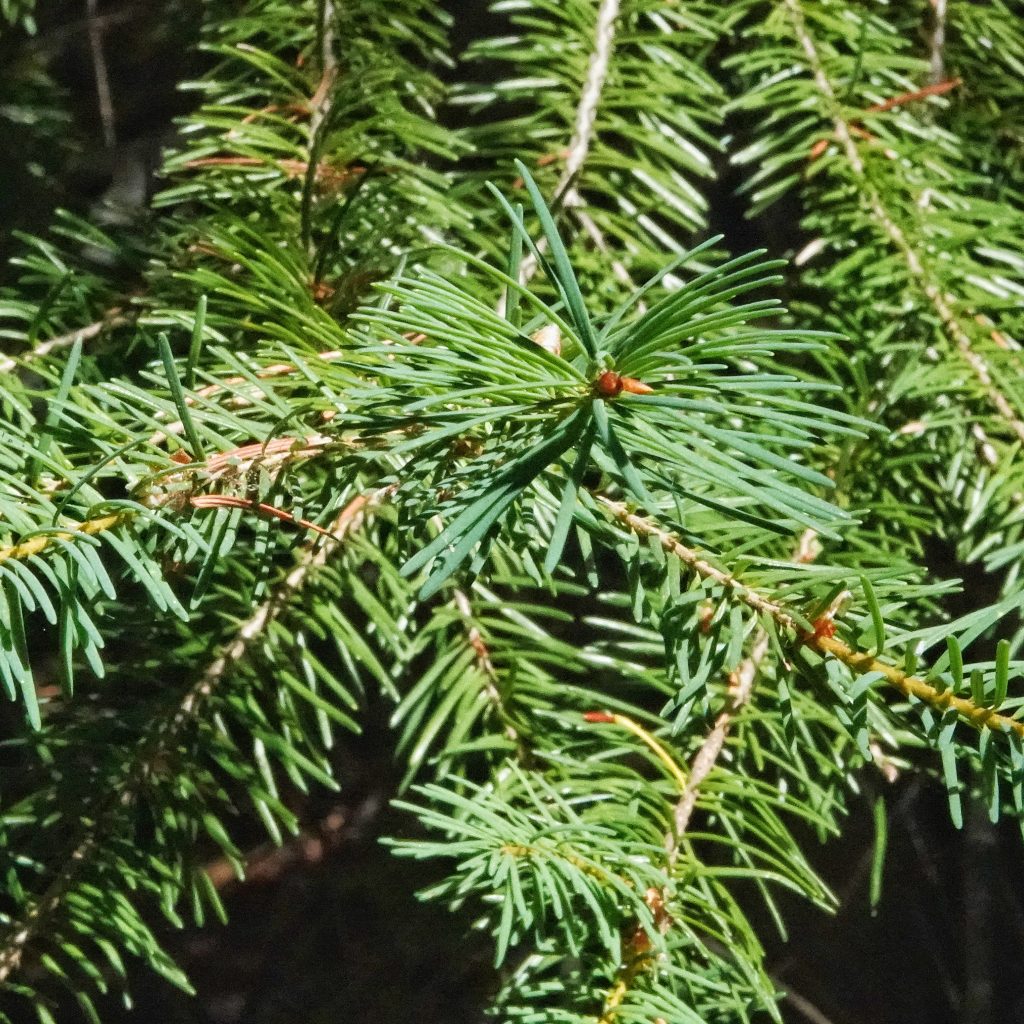
Pseudotsuga menziesii is the largest member of the family Pinaceae, and one of the fastest growing (at least in ideal conditions), so, not coincidentally, it is the most important member of that family for commercial harvest. That is not just in North America, but in the world, since it is widely planted in Europe and other countries for agricultural (primarily for Christmas trees) and forestry purposes, as well as for its ornamental value. Indigenous peoples found a plethora of uses for this tree, even beyond the multitude of uses for its wood. The buds were chewed for sore throats, mouth sores, and venereal disease, and the needles were brewed as tea, and to treat rheumatism and paralysis. The pitch was rendered for sugar, chewed as gum, used to salve wounds, and for a variety of internal disorders. For a more complete list check out the 174 entries on the Native American Ethnobotany Database.
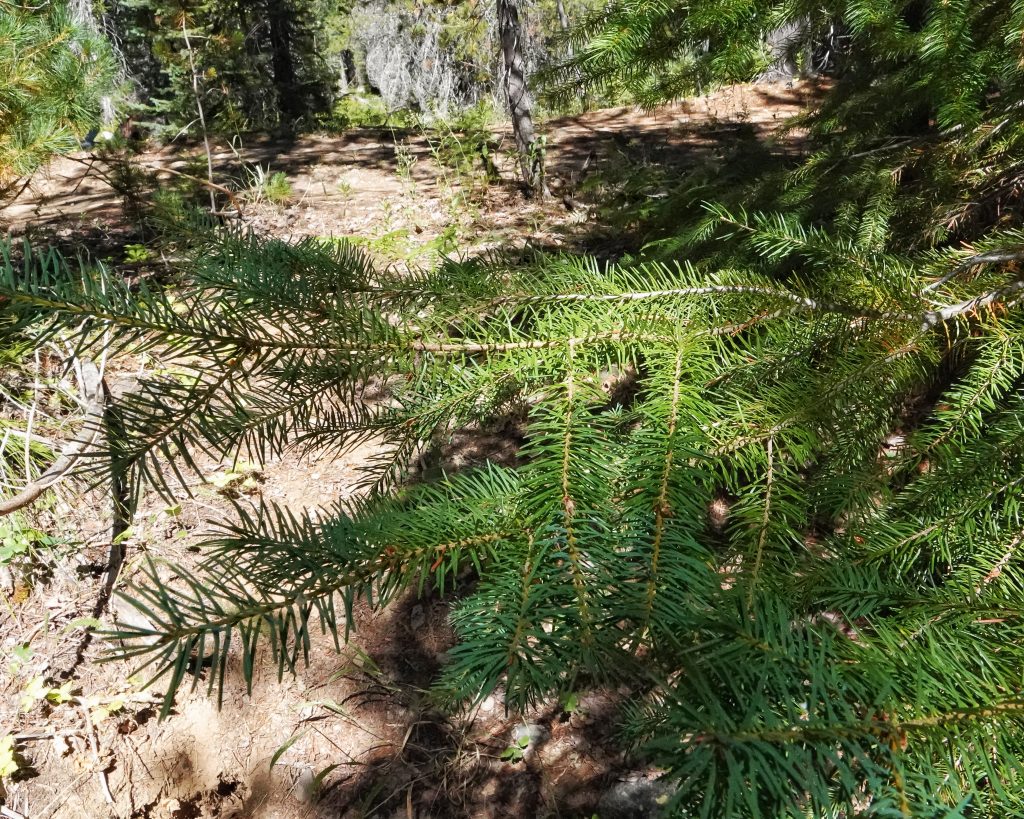
Because of its thick bark Douglas-fir is able to withstand medium intensity fires, and is able to produce cones soon after the fire to take advantage of the lack of competition. It is also shade tolerant, and able to survive in the understory for a number of years (a tree in deep shade with the trunk diameter of a silver dollar may be over a hundred years old), until sunlight is let in by the falling of overstory trees due to disease, insect damage, natural disaster, or a combination of all three, at which time it’s growth will increase dramatically. There are usually several oscillations of growth/suppression cycles in the life of a Douglas-fir, which may last over a thousand years.
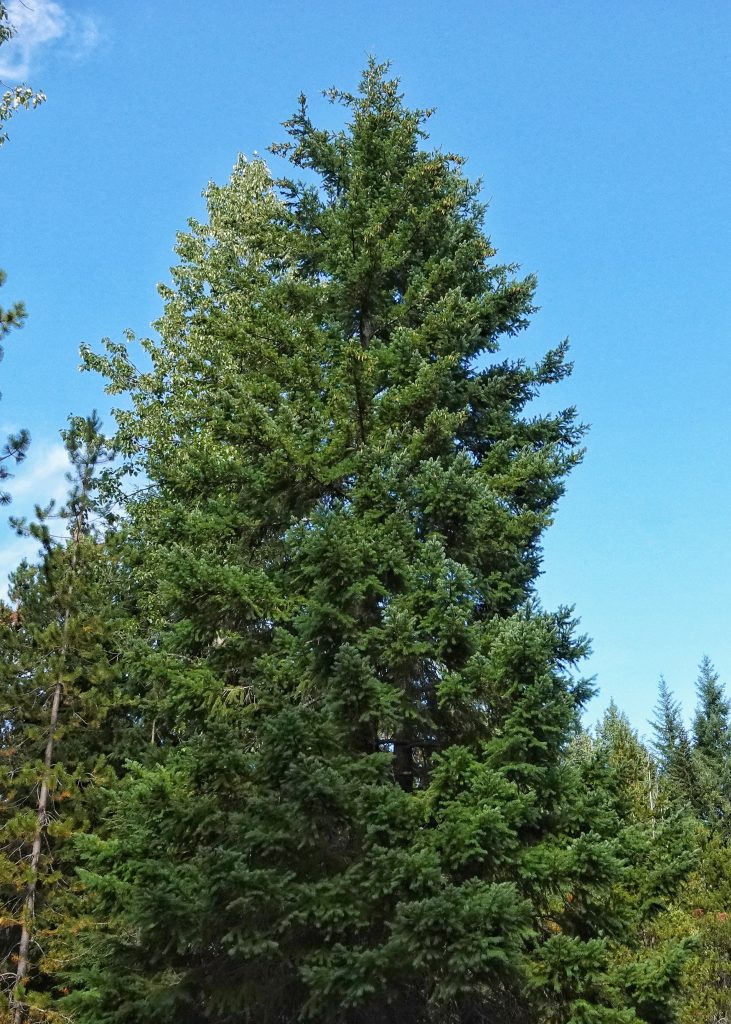
Description-Large (up to 300’ tall and 12’ in diameter) conifer with needles arranged around the stem (sometimes compared to a bottlebrush), and cones with bracts that resemble a pitchfork, a trident, or the tail and hind end of a mouse diving into a hole; needles are flexible, with a groove in the midline of the dorsal surface, and have a pair of lines of stomatal bloom on the ventral surface, but not on top, although some var. glauca do have bloom on the dorsal surface; bark is greyish to reddish brown, and fractures into broad plates with deep furrows; branches often droop almost straight down in mature trees.
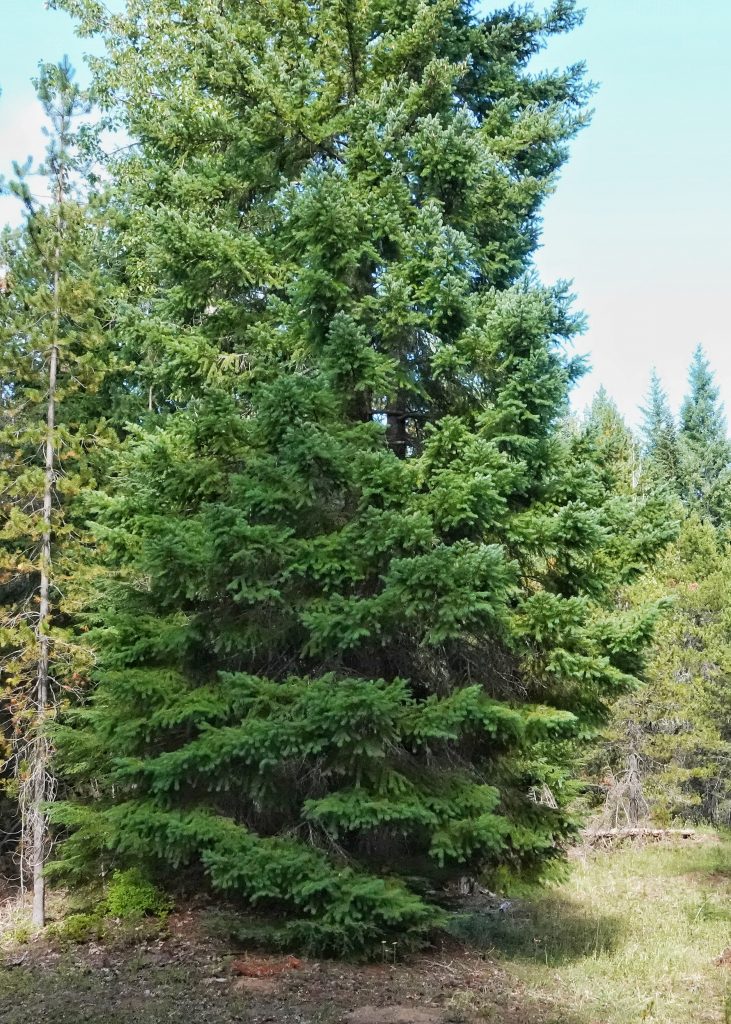
Similar species-see above for comparison to Western Hemlock; Mountain Hemlock has bluish green needles that are shorter, more oblong, thickened in the middle, and cones with rounded scales; true firs (genus Abies) have upright cones and stiffer branches and needles.
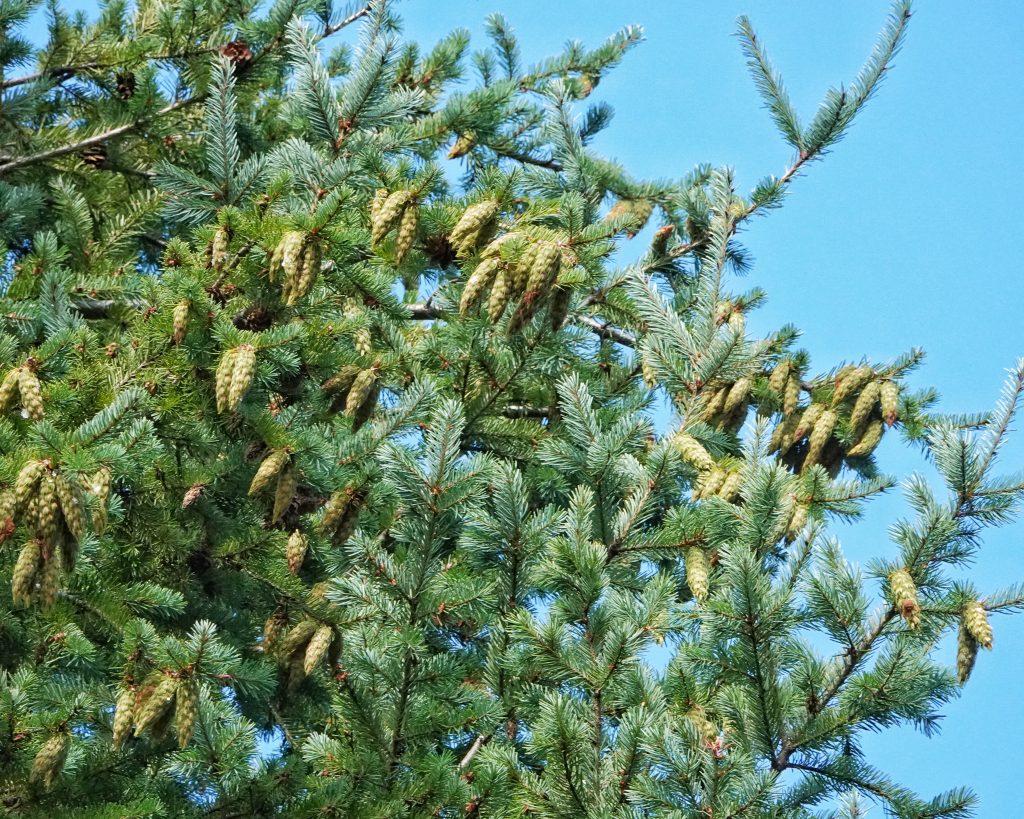
Habitat-Moist to mesic forests up to subalpine elevations.
Range-Western North America; region wide in appropriate habitat; most common from the eastern Cascades west to the Pacific (var. menziesii),but found in all montane areas of our region; those east of the Cascades are generally var. glauca.
Reproductive timing-Pollination happens in May-June and cones mature and fall off in late summer.
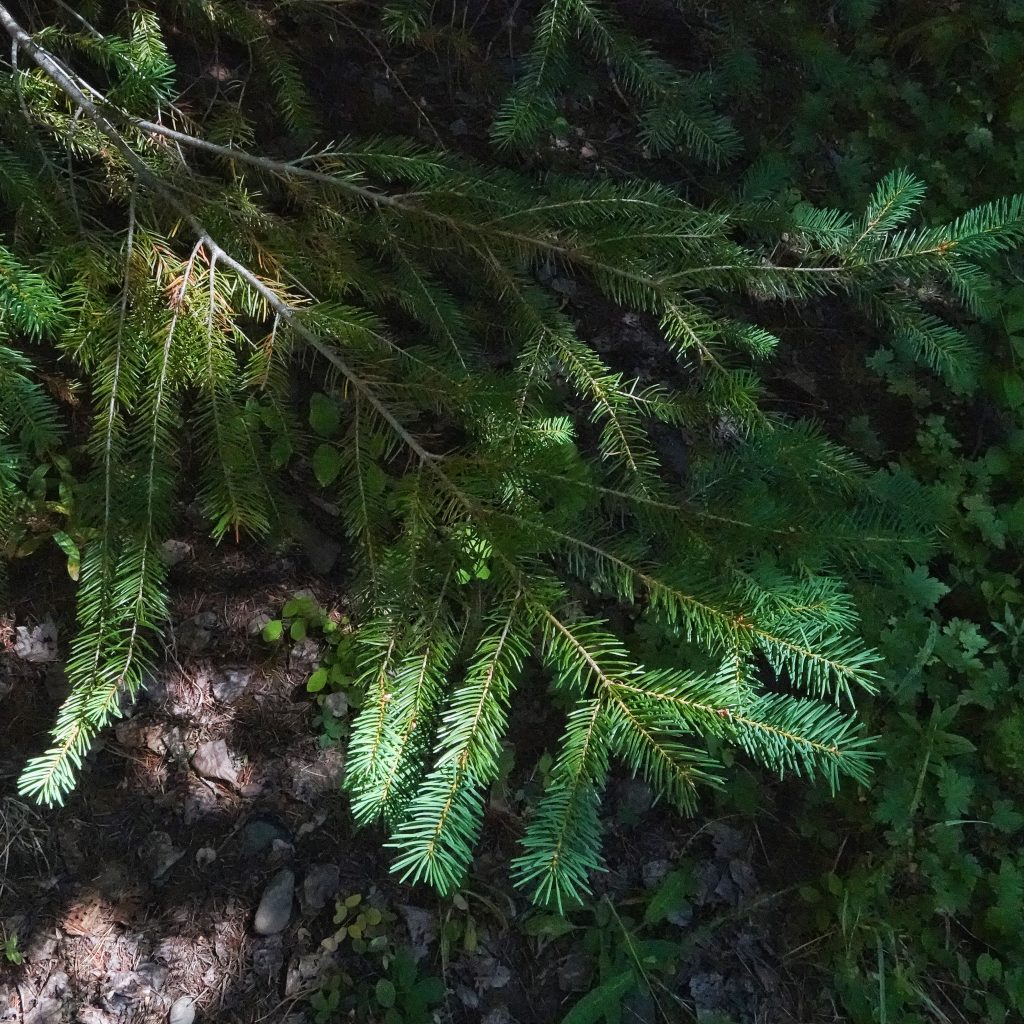
Eaten by– The bark beetle Dendroctonus pseudotsugae, larvae of the long-horned beetle Trichocnemis spiculatus, a variety of weevils, and Pleocoma spp. rain beetles; larvae of the chalcid wasp Megastigmus spermotrophus, the gall midges Contarinia washingtonensis and C. oregonensis, and the stink bug Brochymena hoppingi; larval host for the siricid wood wasp Sirex varipes; Pine White and Western Pine Elfin butterflies; leaf mining larvae of the moths Feralia jocosa, Marmara oregonensis, Cydia pseudotsugae, Argyrotaenia occultana, Dioryctria reniculelloides, and members of the genera Coleotechnites and Choristoneura; in addition to the leaf miners, there are well over a hundred other moths that utilize this as a larval host, including Gabriola dyari, Lophocampa argentata, Ypsolopha nella, Dasychira grisefacta, Lithophane innominata, Zale minerea, Phyllodesma americana, Barbara colfaxiana, Chrysoteuchia topiaria, and members of the genera Chionodes, Epirrita, Enypia, Eupithecia, Hydriomena, Pero, and Orgyia; deer, elk, hares, rabbits, and mountain beaver browse seedlings and saplings; pocket gophers and bears will eat the bark of young trees
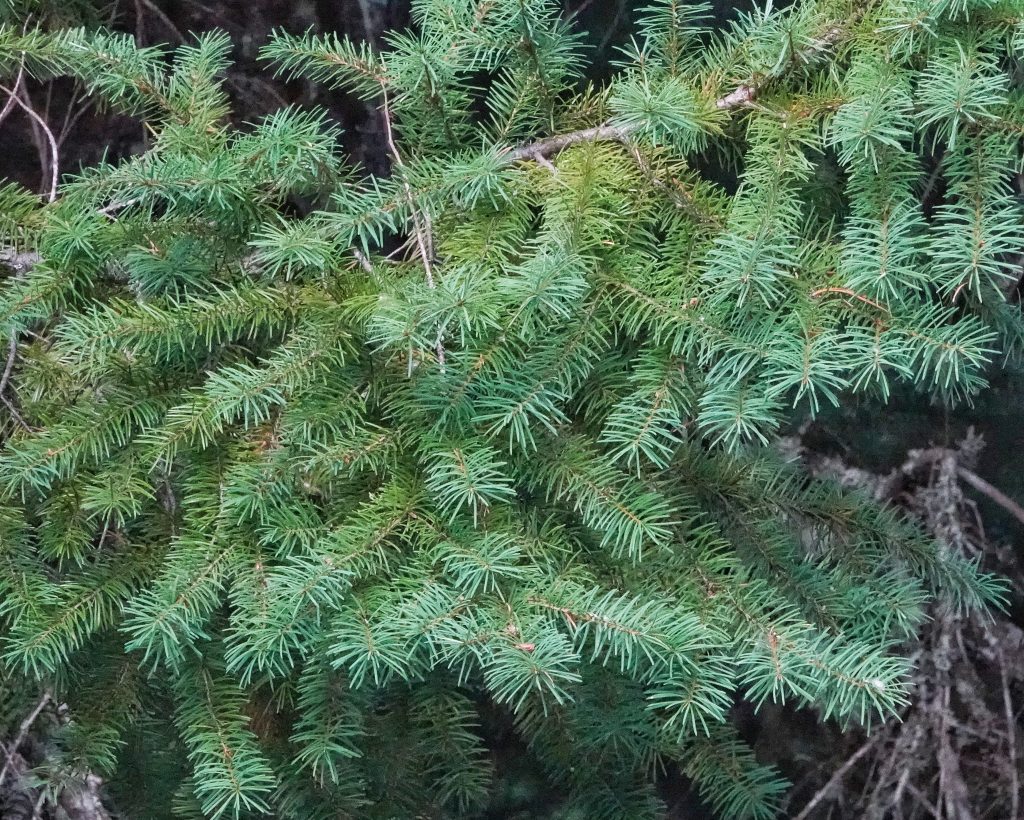
Etymology of names– Pseudotsuga is from the Greek word for ‘false’, and the Japanese word for ‘hemlock’, and refers to their similarity to the hemlocks. The specific epithet menziesii honors the well known surgeon, explorer, and botanist Archibald Menzies (1754-1842). The common name Douglas-fir honors the well known explorer and botanist David Douglas (1799-1834), and the dash before ‘fir’ denotes the fact that this is not a true fir.
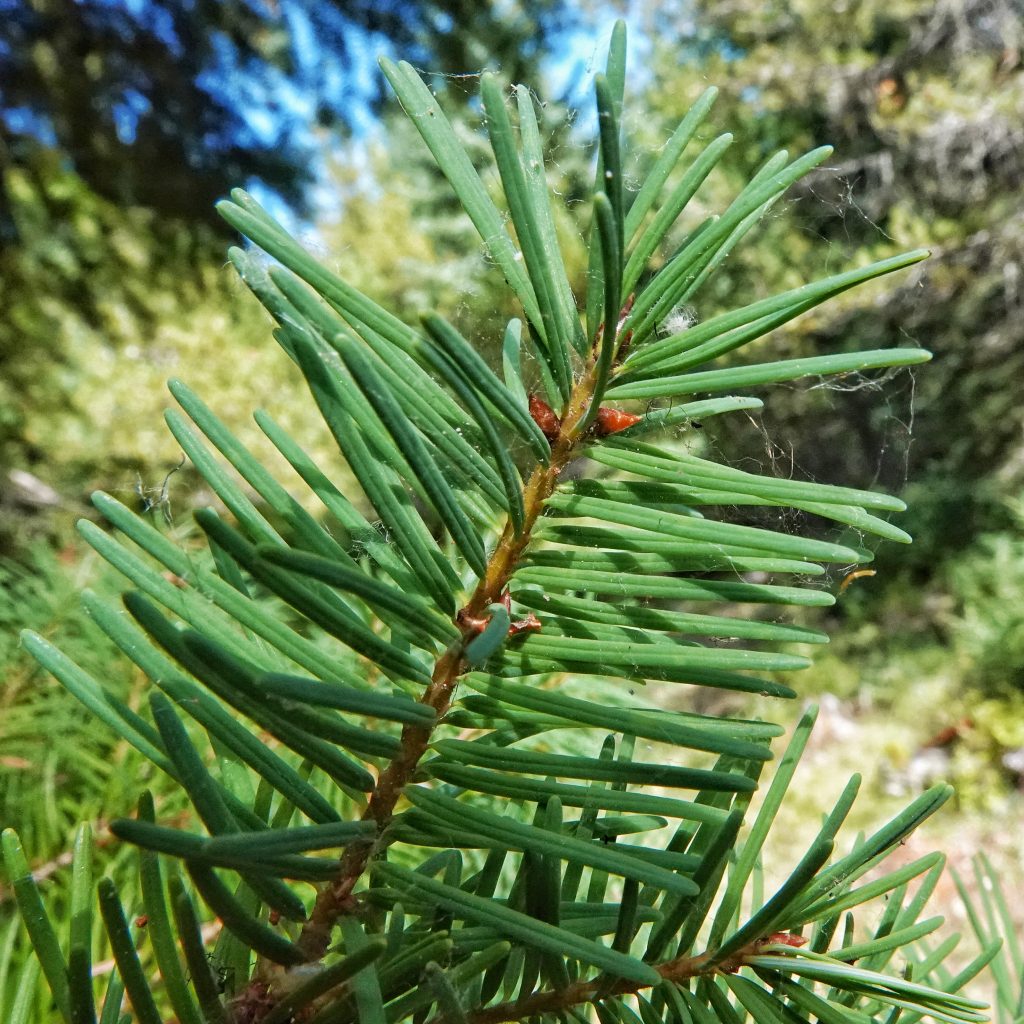
Pseudotsuga menziesii (Douglas-fir) description
https://www.dnr.wa.gov/publications/lm_hcp_east_old_growth_hires_part10.pdf
Douglas-fir (Pseudotsuga menziesii) – Forest Research and Outreach
BRIT – Native American Ethnobotany Database
http://www.plantsystematics.org/reveal/pbio/LnC/dougfir.html
OregonFlora Pseudotsuga menziesii
https://en.wikipedia.org/wiki/Archibald_Menzies
https://en.wikipedia.org/wiki/David_Douglas_(botanist)
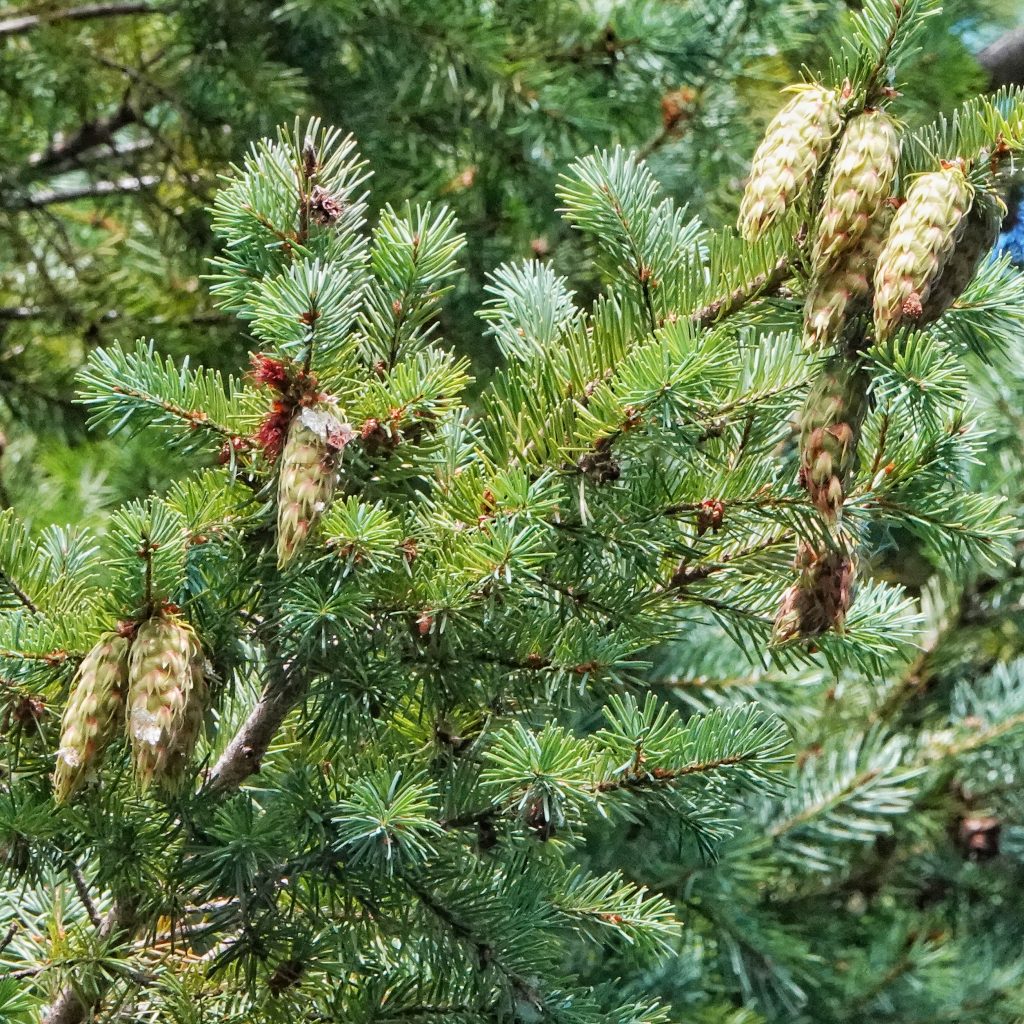
Hey Dan,
The easy way to tell Mountain Hemlock is the top always droops.
Thanks, Steve. All of the books talk about that ‘droopy leader’, but I haven’t found it very useful because, on the trees that confuse me, I can seldom see their top. But I can see where, scanning a vista, it would be useful, and I mention it in the upcoming profile of Western Hemlock.
The top of the Western Hemlock also droops. I have the most problems telling the difference in medium sized trees when the needles are too high to get a good look at, the tops of the hemlock are too high to see, but the thick bark of the Doug-fir is not yet pronounced. Trees with a breast high diameter of, say, about 1 ft to 2 ft.
I always enjoy your write-ups.
Exactly! I have recently found that the zoom on my camera (and I’d imagine that binoculars would do the same) will enable me to see a silhouette of the foliage on those mid-height trees. Thanks for your appreciation!
Many thanks. Great explanation & quality pictures!
Thanks Sandrine!